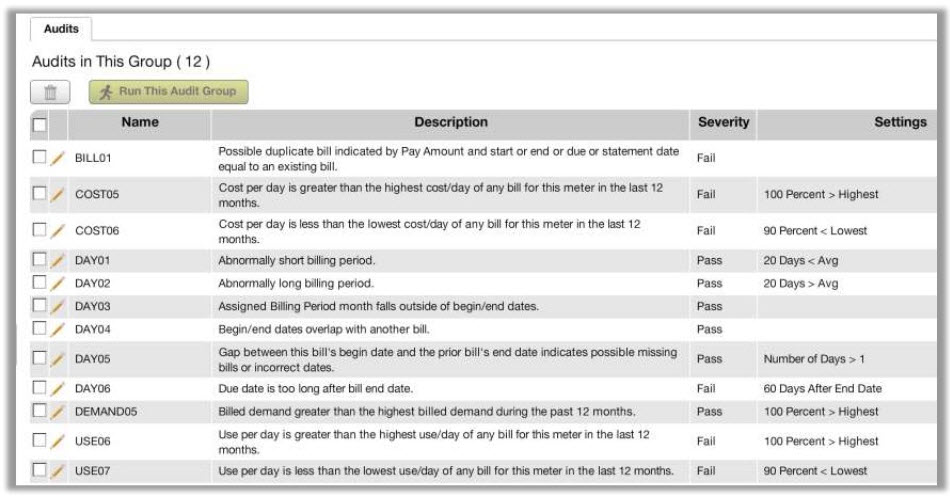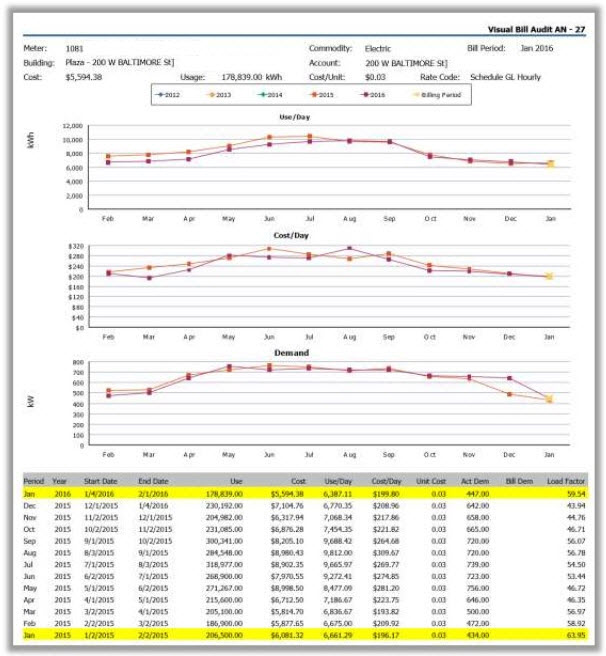 Dyspepsia can hit you right in the gut. It’s that bad case of “indigestion” you experience as an energy manager due to bad utility bill data.
Dyspepsia can hit you right in the gut. It’s that bad case of “indigestion” you experience as an energy manager due to bad utility bill data.
So what’s the cure for the bad data in your utility database? Audits and graphs. They are related but different treatment regimens. Let’s talk about audits first.
EnergyCAP Audits
There are 55 different bill audits available “out of the box” in EnergyCAP, and if you’re not using at least a dozen of those, you are a prime candidate for dyspepsia. The great thing about audits in EnergyCAP is that they can be tied together in different audit groups for different purposes with different tolerances. Each audit group can be tuned for a specific purpose. And you can run as many of them as you want through the bill processing cycle from bill entry to final payment approval. It’s just what the doctor ordered!
You can have one audit group for electric bills and another audit group for gas bills. If you want to vary the sensitivity by vendor, you could use different audits for each. You could run different audits depending on if the bills come in electronically or if they’re manually keyed. The sky’s the limit!
You can even set up your bill processing workflow to run customized audits automatically. Or you can wait until all the bills have been entered, whether manually or imported electronically, and then run the audits in a group. Some people might run audits by batch as soon as the batch is closed. Others might wait until the end of the week, or even the end of the month to run the audits. EnergyCAP gives you the flexibility to determine exactly how and when you run audits.

At EnergyCAP, we recommend using the Quick Check audit feature as a minimum. It only takes a few minutes to set up these twelve audits and turn them on in Administration.
Once you have turned on the Quick Check audits, audits will run whenever you manually key a bill. If you happen to be importing any bills electronically, you can run this audit group for just the import batch after you have completed the import.
Make sure to check the tolerance settings for the Quick Check audits, so you are aware of what you are catching and what you may be missing. Quick Check audits were designed to catch keying errors where the bill might be off by a decimal point, or where there is clearly a bill issue that would cause problems with reports.
Graphs are Easy on the Eyes
For anyone who doesn’t want to run audits, or who just wants more of a visual approach, EnergyCAP graphical reports present an easy alternative. You can use reports and audits together, but there are certain people who just don’t want to run audits. They want to eyeball the data.
The AN27 report was intended for eyeballing:

The yellow star on the far right of each graph right marks the plot of the current bill data in a historical sequence stretching back for years if you wish. Each graph in the report represents a different energy metric. In this example, the three graphs display trends for:
- Use per Day
- Cost per Day
- Demand (electricity only)
Each graph displays the current bill data on the right, with the previous monthly bills in that year defining the trend line. Each previous year of included data is overlaid with a different-color trendline.
The AN27 report generates one page per bill. Do not print this report (too much paper)! There’s really no reason to print it. Just run the report and then choose the “Save to PDF” option.
Once you have created the PDF, you can page down through the report very quickly because the eye is going to catch any instance where the current bill (marked by the orange star) is significantly different than the historical trend. Using this technique, you can process a 500-page report in less than ten minutes, unless you’ve got really bad dyspepsia.
In the example above, the current bill is in line with previous bills, so there is no evidence of a problem.
Because the AN27 report is configured to display one bill per page, you should only run it for the bills you’ve entered most recently. Run it for one billing period, or run it for one batch of bills. You could also run it for all bills entered for the last ten days—something like that. In this manner, the report will serve the same purpose as the audits in keeping bad data out of your system.
If you’ve got dyspepsia, try EnergyCAP audits and graphs. You’ll be feeling better in no time!
> > > Read about Miami-Dade County’s automated audit protocols!
{{cta(‘f21d984d-dff3-4ca0-bb86-6361b1f13c94’)}}
 Best-in-class portfolio-level energy and utility bill data management and reporting.
Best-in-class portfolio-level energy and utility bill data management and reporting.
 Real-time energy and sustainability analytics for high-performance, net-zero buildings.
Real-time energy and sustainability analytics for high-performance, net-zero buildings.
 A holistic view of financial-grade scope 1, 2, and 3 carbon emissions data across your entire business.
A holistic view of financial-grade scope 1, 2, and 3 carbon emissions data across your entire business.
 Energy and sustainability benchmarking compliance software designed for utilities.
Energy and sustainability benchmarking compliance software designed for utilities.
 Dyspepsia can hit you right in the gut. It’s that bad case of “indigestion” you experience as an energy manager due to bad utility bill data.
Dyspepsia can hit you right in the gut. It’s that bad case of “indigestion” you experience as an energy manager due to bad utility bill data.



